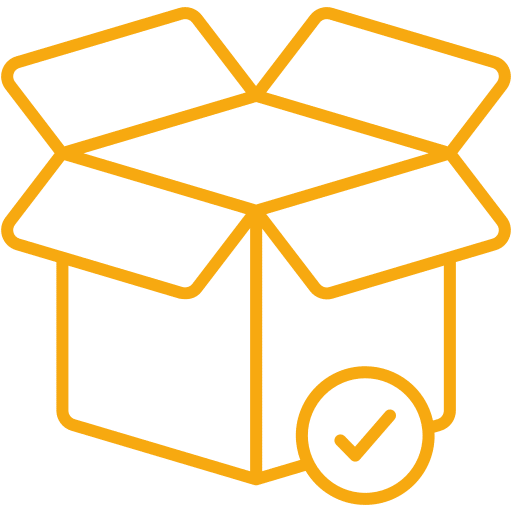Now more than ever, the dynamic of digitalization is making e-commerce increasingly attractive. It's only fair that, just like the B2C marketers before them, B2B players want to find their place in the sun. In this context, faced with an ever-increasing volume of data from digital channels, customers have increased their demands both in terms of products and user experience. This means B2B professionals have to find ways to stand out in a hyper-competitive environment where product content plays a decisive role.
What Is Product Content Exactly?
Product content is the cornerstone of product experience management (or PXM) and refers to all the content created by a company concerning the products it markets. Product content aims to inform customers and convince them to buy. Product pages are a part key of product content, but it goes beyond this.
Product content refers to product communication in general and includes everything from brand and product information to specific promotions, buying guides, social media posts, product news, how-to's, product comparison charts and offer launches, among others.
All of these forms of communication are part of the product experience. Insofar as any desire to buy generally begins with a first step of product research, a lack of information can be a sufficient reason for a customer to decide to turn away from one product in favor of another. This is why product content requires a real strategy. It's all about providing the right product information, at the right time, in the right format.
What’s at Stake?
Due in part to the physical distancing that has taken place since 2019, digital channels have become essential for information journeys. The product content present on corporate websites, social networks and e-commerce website product pages must be absolutely flawless.
The optimization of content, especially on product pages, revolves around 2 key points:

#1: HELP BUYERS MAKE INFORMED DECISIONS
Product content should contain information focused on the product itself, but also on its uses and the related purchase process. Product content is a kind of "Help" content which answers questions the buyer might have. For example:
- Does this product meet all of my specifications (dimensions, performance, where its made, etc.)?
- Or "Have previous buyers been satisfied with this product?"
If, as a seller, you don't provide access to quick and efficient answers to these questions, it is likely that the customer journey will stop here.
In today's competitive environment, product content must also stand out. It’s important to offer product content that’s comprehensive and original. This will facilitate the customer journey. And if your product information is more complete than that of your competitors, this will help your SEO.
The accuracy, relevance, consistency and transparency of information is also essential in order to build and maintain customer trust. Forget marketing buzz! Product content must be reliable to remove any potential obstacles to confirming purchases. Opt for detailed explanations as well as useful and objective communication to accompany customers in their decision-making process. Ideally you want to help customers picture the product in detail by giving them access to a visual representation.
By optimizing product content in this way, you will allow customers to make the right choice and understand how to use the product optimally. At the end of the day, the goal is to provide customers with all the tools likely to reassure them with regard to their future purchaseand, of course, convince them to take action.

#2: ENSURE E-COMMERCE CONVERSION
The second challenge of product content, is to inspire preference over the competition and lead to a purchase. Confirming a purchase is the culmination of a process of reflection. This process consists of the customer examining the product, checking their range of options, questioning how it works if necessary, comparing it to other alternatives, consulting the opinions of previous buyers, confirming their preference and finally making their decision. This is how the process unfolds, from understanding the interest in the product to the decision-making, through projection of use to the purchase itself.
Given that customers will probably not read all of your content, the most important elements, such as customer benefits, must clearly stand out. Keep minor information in the background by playing with the font size and colors as well as the structure and spacing of the layout. Prioritizing information in this way will allow potential buyers to view the advantages of your product immediately.
Our advice: capture their attention.
In order to win over buyers, your product content must be enticing, especially from a visual standpoint. The attractiveness of a product is based on the way it is presented: the image, just like the words, must tell a convincing story. Remember: the competition is only a click away! Is your content compelling enough for the purchase decision to be made in your favor?
By supporting buyers throughout their deliberation with convincing product content, you can include them in an active process of evaluation, comparison and buying. Only under these conditions can product information ensure a fluid customer journey and really lead to purchases.
The Product Page: a Strategic Asset in the Buying Journey
Given the option, customers won’t hesitate to learn about your products by all the digital means available: they will consult online reviews, discuss topics on social media, use product comparison tools, etc.
To increase average shopping carts, improve conversion funnels and create a high-level product experience, it is essential to provide effective product content on your product pages.
When structuring them, try to answer the following questions thoroughly:

How do you make prospects want to buy?

How do you prove how useful the product is?

How can you help in the decision-making between different products?

How do you guide the customer through the buying process?

How can you help the buyer picture using the product?
Here are 8 guidelines that can also help you with the structure:
1 - Put yourself in the buyer's shoes

An engaging product page must fill the role of the seller and answer all of the customer's questions. It's essential to put yourself in the buyer's shoes to understand the potential obstacles to a purchase and be able to develop relevant sales arguments and make the product page as reassuring as possible.

2 - Present comprehensive product content

The more detailed your content is, the less likely prospects will turn away from your product page in search of more relevant information. The main elements you should display are listed below (to be adapted according to your product line of course):
- The name of the product and an explicit title
- A complete description of the product (i.e. nature, function, strong points) with a catchy hook and polished sales pitch demonstrating the product's attributes (short sentences, bullet points, etc.).
- The product’s technical characteristics (dimensions, weight, material, colors, size guide, components, connection to other products, resistance to various types of conditions, manufacturing standards, energy consumption, etc.). Because B2B products can be complex and unique to each industry, it can be challenging to create a comprehensive list of features. Something to keep in mind—focus on these five key aspects: composition, ecological footprint, performance, requirements and tolerance.
- Transactional information(price in the appropriate currency, potential taxes, stock, shipping terms and delays, return conditions, etc.)
- The list of accessories provided (or not provided) and necessary to use the product (cable, batteries, screws, etc.)
- Instructions for use, user manuals or data sheets available for download
- User tips(precautions to take, indoor and/or outdoor use, cleaning, etc.)
- Industry standard content and expert recommendations(fields of application, maintenance tips to extend the life of the product, etc.)
- Important mandatory information (concerning safety, user age, controlled origin, certifications, etc.)
- “Call-to-action" buttons should be strategically distributed on the page to facilitate conversion (e.g. “Add to cart”)
- Brand image elements in the background (slogan, tone of voice or words trademark to your company)
3 - Illustrate your product page with visuals and videos

We live in a world of images. While the written content on your product page is important, it is also essential to work on the visual identity of your page to compensate for the fact that buyers can’t touch or handle the product. Allowing them to view the product in detail will make it easier for them to decide.
To achieve this, there are many types of visual content available:
- High definition photos of the product from all angles with the ability to zoom in
- In-context product photos
- Videos (highlighting features, demonstration of use, etc.)
- Diagrams outlining product use
- Logos of labels and certifications related to the product, etc.
And for those of you who don't have the budget to hire a professional photographer, there are now many online guides that will help you create product visuals that will appeal to your visitors (e.g. A Picture Is Worth a Thousand Sales: A DIY Guide to Beautiful Product Photography).

4 - Optimize your texts and images for SEO

To get your page visible on search engines, you’ll have to work on its organic SEO (Search Engine Optimization) by applying the best practices.
This includes creating unique content, integrating relevant keywords and optimizing your images (title, tag, weight).
5 - Allow the visitor to compare in order to make the best choice

In practice, it is recommended to direct the prospect to both similar, more expensive products (up-selling technique) and complementary products (cross-selling technique).
The goal–to increase the amount of customers’ average shopping carts and generate maximum sales!
To do so, these suggestions must appear on your product pages. Ideally, you should link your product pages together and provide visitors with a product comparison tool. This is a popular tool that will allow them to make an informed choice.
6 - Show how reliable your products are through customer reviews and testimonials

There are several ways to improve your trust score, including posting customer ratings, featuring user testimonials and sharing expert articles or product ratings based on user experience. Each buyer is a source of information for other potential buyers. It’s important to show what convinced previous buyers. They are one of the most credible channels for recommending your products.
7 - Offer support solutions

Demonstrate your quality of service by providing your visitors with FAQ (Frequently Asked Questions) and/or a live chat. Answering your prospects' questions, providing tutorials and generally being supportive are all ways to create a connection with them and lay the groundwork for confident purchases.
8 - Adopt a responsive design

Consider designing your product pages so that they automatically adapt to the display size of the visitor's device. By creating your pages with a responsive design, optimizing the positioning of your image slider and including mobile call-to-actions, you will increase the conversion rate as each prospect will be able to consult your product page easily and comfortably.
Use PIM (Product Information Management) to structure information

With the increasing demand for personalization and the constraints of SEO requirements, it can quickly become complex and time-consuming to design, enrich, contextualize and update unique, quality product pages. To structure information and improve the product experience on all distribution channels, more and more companies are turning to PIM. PIM is a SaaS or software solution dedicated to the management and distribution of product information. Widen, PIMworks, inRiver, Pimcore, Akeneo and Riversand are some of the most widely used solutions.
As soon as a product is created, the PIM solution collects the initial raw data and alerts the relevant teams. The product page is gradually enriched with data (description, technical characteristics, storytelling, labeling, packaging, cross and up-selling...) until it reaches the expected quality level and is automatically distributed to all sales channels and adapted to their specific constraints.
The advantages of a PIM solution are multiple:
- Data centralization and security
- Productivity gain and more flexibility
- Content online faster
- Automated production of documents (catalogs, price lists, etc.)
- Harmonization of data for more consistency and reliability
- Elimination of duplicates and errors
- Management of up-selling and cross-selling
- Facilitation of collaboration between teams
- Change history saved
- Generation of product reports
- Reduced data integration and update costs
- Facilitated multi-channel data management for quick distribution on e-commerce sites, etc.
Regardless of the number of products or the size of your company, PIM allows you to increase your overall performance because the enrichment and contextualization of product content according to the distribution channel decisively influences purchase decisions.
With the current phenomenon of commercial distancing, product content represents a promising driver for online efficiency and plays a key role in the "conversation strategy" of companies with their prospects. The exacerbation of competition is also forcing companies to defend themselves in the field of product information. Henceforth, it will be impossible to avoid having a real product content strategy. Engage in a constructive dialogue with your potential buyers from the very beginning of their buying journey, provide them with top-quality data, stimulate them, reassure them and learn to anticipate their content needs! Guaranteed return on investment.










